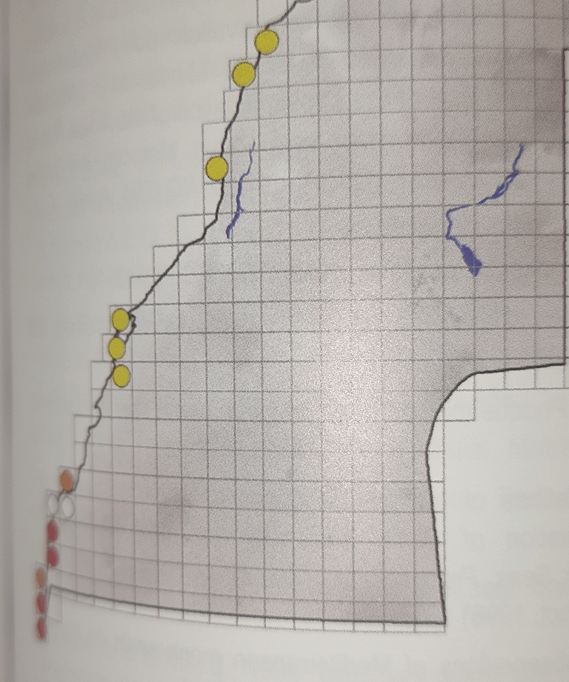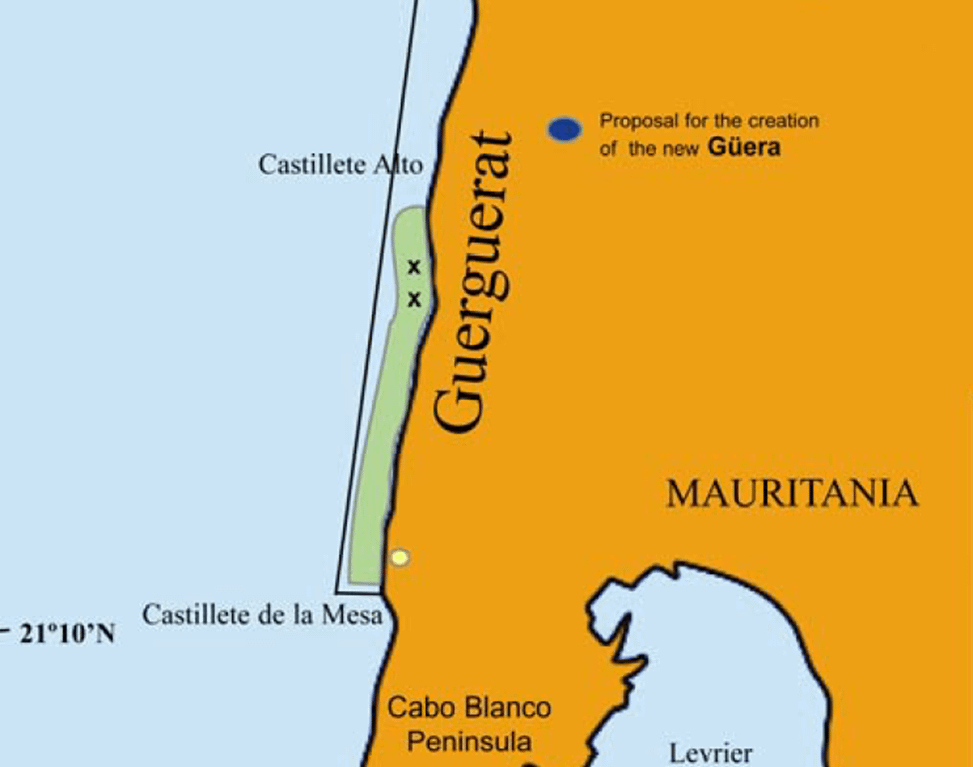The Mediterranean monk seal (Monachus monachus) is a vulnerable marine mammal which has a small yet critical population along the coasts of Morocco. The Mediterranean monk seal is the only seal species that does not frequent cold waters and is confined to temperate and warm waters. Adults can reach a length of 2.8 meters and weigh between 250 to 400 kilograms. The newborns measure between 80 and 120 centimeter in length and weigh between 15 to 26 kilograms. According to a 2023 assessment by the IUCN, the monk seal is vulnerable (VU) i.e., a species that is at high risk of extinction in the wild. However, its population trend is increasing across the Mediterranean and the Atlantic Ocean.

An adult monk seal is known for its smooth, dark gray to brownish fur. Monk seals typically reach full maturity around 4 to 6 years of age.
Small breeding colonies on beaches and caves are rare. However, it was so abundant in the 15th century that it was even mentioned in 1436 in the Oued Edhahab under the Spanish name Las Cuevecillas or small caves in English. However, the 20th century marked a dramatic decline in their numbers due to increased human activity, such as fishing, coastal development and deliberate killing. The rise of tourism also contributed to the disturbance of the monk seal’s natural habitat, pushing them further towards the brink of extinction. These activities have led to habitat loss, greater disturbances, and a decline in vital resources such as fish and cephalopods. Moreover, rising levels of pollutants like organochlorines and heavy metals in the Mediterranean pose further risks, potentially disrupting and impairing the seals immune and reproductive systems.


The largest breeding colony was identified at the Cape Blanc (Ras Nwaddhibu, Mauritania) in 1997. A remarkable presence was even documented in the 1920s by Théodore Monod (1902-2000) in Port-Étienne (Nwaddhibu). However, a catastrophic event in the summer of 1997, when a disease, possibly caused by a morbillivirus or a toxic algae bloom, killed over 200 individuals—about two-thirds of the population—in just two months. This event severely compromised the viability of the species.
Today, the Mediterranean monk seal population in Morocco is alarmingly low, with only a few individuals observed in recent years. These seals are primarily found in isolated areas along the Atlantic coast, particularly in the regions of the Sahara and some parts of the Mediterranean coast. The small populations in these areas are considered part of the broader Atlantic-Mediterranean population, which is estimated to number less than 600 individuals globally.
Here is a recent appearance of the monk seal, captured by the Association Nature Initiative (A.N.I) in May 2024 at the port Amhiriz in the Bir Gandouz commune.
You can see more in this video.
Conservation efforts in Morocco have gained momentum over the past few decades, driven by both international and local organizations. The monk seal is now legally protected under Moroccan law, and several marine protected areas (MPAs) have been established to safeguard their remaining habitats.
One of the most notable conservation initiatives is the Mediterranean Monk Seal Conservation (MSA) Programme, which focuses on monitoring the remaining populations, protecting critical habitats, and raising awareness among local communities and tourists. Efforts are also being made to mitigate the impacts of fishing, such as reducing bycatch and implementing sustainable fishing practices that minimize the risk of entanglement for these seals.
Here you can read more about the MAP/UNEP programme: https://www.unep.org/unepmap/
and MSA: https://www.monksealalliance.org/en/index
Here, you can read about Morocco's National Legislation Inventory for the conservation of monk seals: https://www.cms.int/en/document/national-legislation-inventory-morocco
Despite the efforts to protect the monk seal, numerous challenges remain. Illegal fishing practices, habitat degradation, and the growing impact of climate change continue to threaten the survival of this species. The seals low reproductive rate and small population size make them particularly vulnerable to these threats, and any further decline could push them closer to extinction. As you can see illegal fishing camps, gears and canoes (pirogues) in the following maps of the Sahara coastline:

Furthermore, the remoteness of their habitats along the Moroccan coastline makes monitoring and enforcement difficult, allowing illegal activities to go unchecked. Continued efforts are needed to strengthen conservation measures, including stricter enforcement of existing protections, increased funding for conservation programs, and ongoing research to better understand the species ecology and behavior.
Mammifères sauvages du Maroc: Peuplement, répartition, écologie (2017)
Guide DELACHAUX - Mammifères d'Europe, d'Afrique du Nord et du Moyen-Orient (2020)
Le Phoque moine de Méditerranée: Découvre la biodiversité du Parc National d’Al Hoceima
Regional Strategy For The Conservation of Monk Seal in The Mediterranean
Note sur la présence du Monachus sur la côte Saharienne - Theodore Monod
If you enjoy my blog, please share, subscribe and consider Buying Me a Coffee or supporting me on Patreon.











